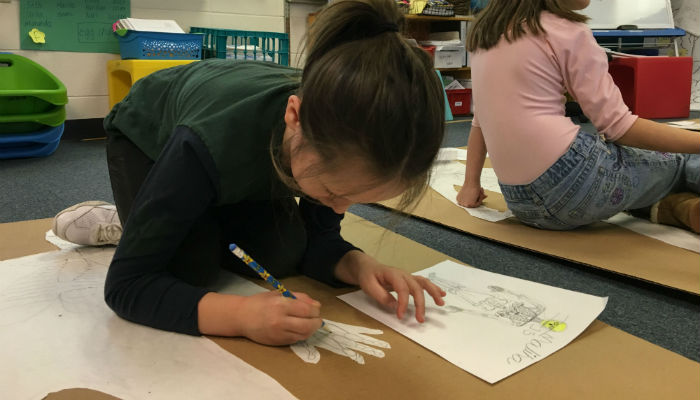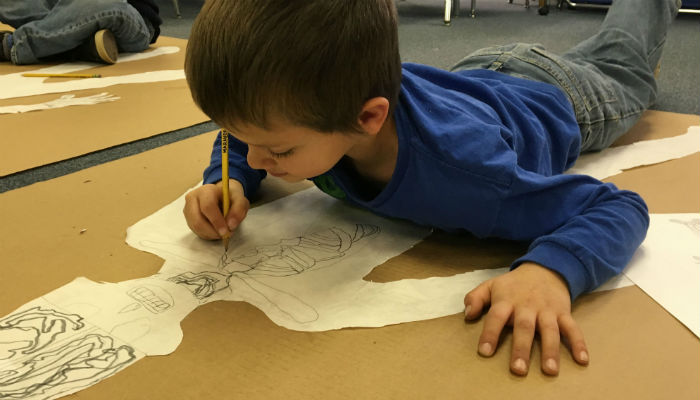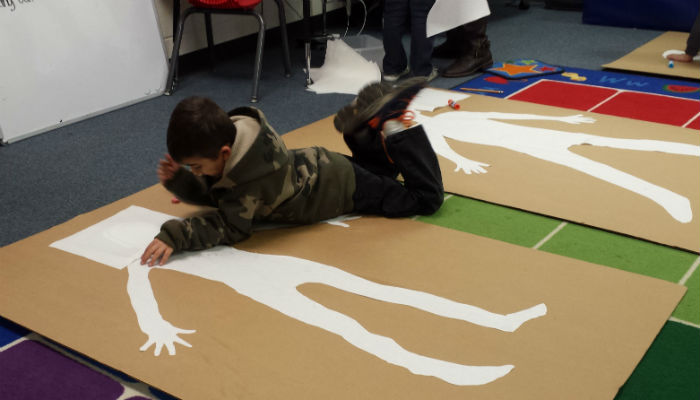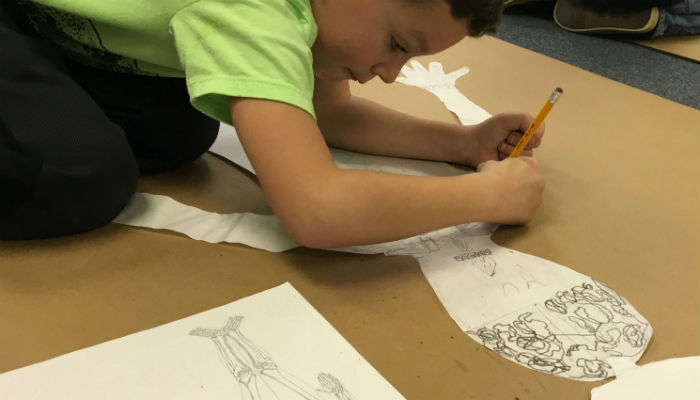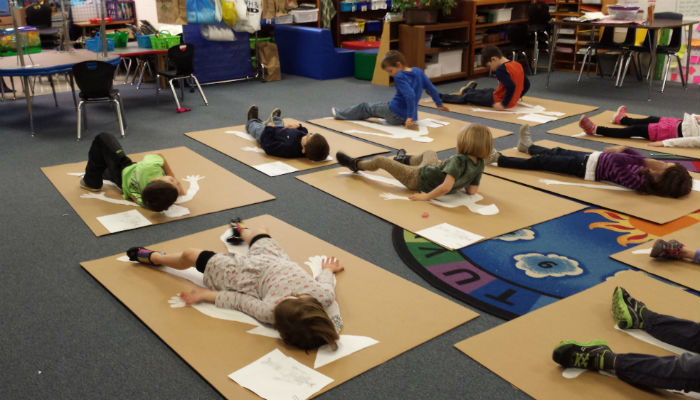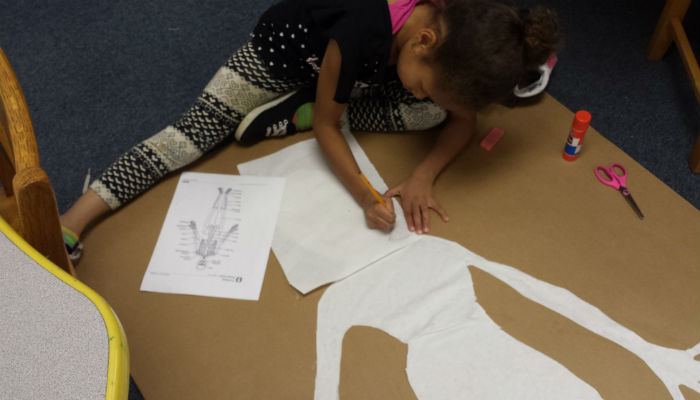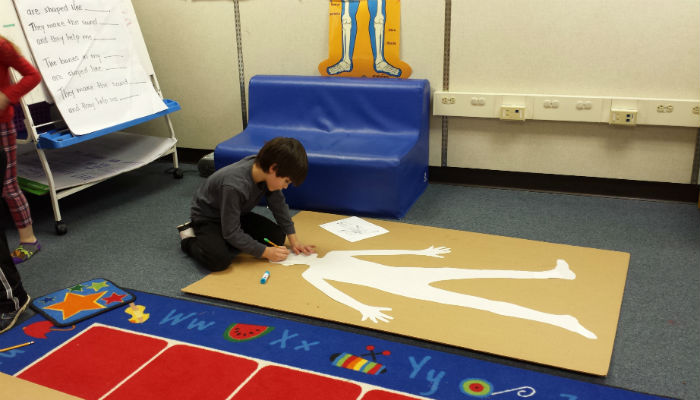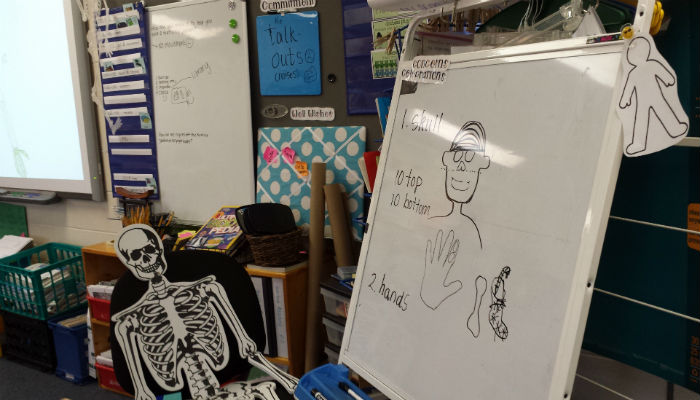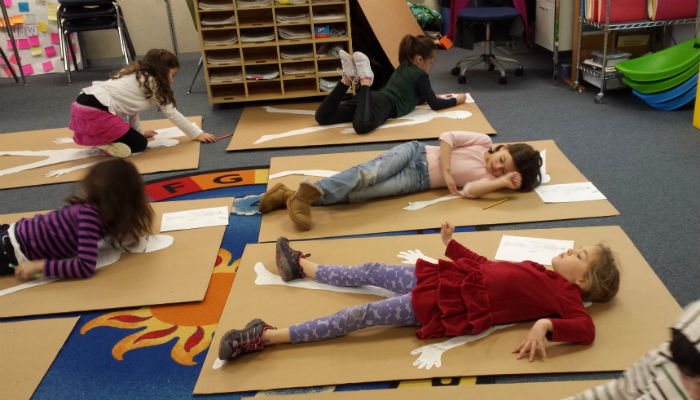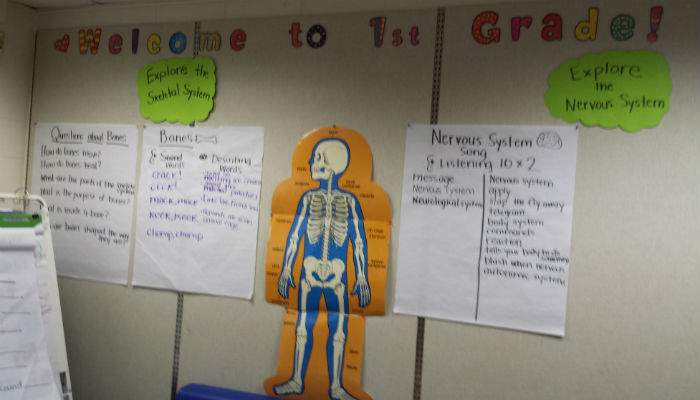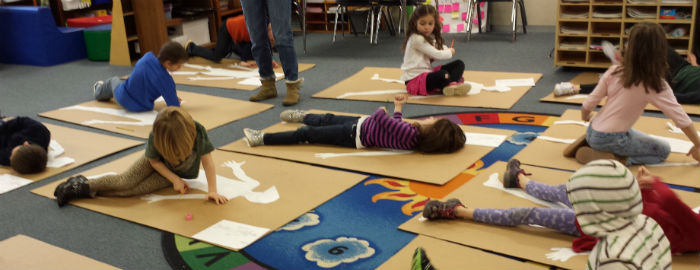
This trimester, first grade students are investigating the question: How does the human body work?
At home, parents traced the outlines of their child on white paper and glued them to thick cardboard, one page for each system. It is on these life-sized paper cut-outs that each student will illustrate the systems of their body to scale. Over the course of the unit, each page of the Body Book will explore a different body system and how it functions.

Page one is the skeletal system. To begin, each class listed things they already knew about bones, questions they had about bones, and explored the sounds of bones in Drama class. They have observed how their own bones feel under their skin, shared experiences they’ve had with broken bones, and wondered how their bones support them in everyday life.

To help answer their questions and find out more, they have been reading books about bones, the skeletal system and bodies in general. Earlier that week, each class had Reading Centers, when small groups of students work with their teacher and parent volunteers in guided reading practice. Mrs. Beilke’s class read What’s Inside of Me?, a text listing the major organs in each system, practicing sight words and reading strategies. Mrs. McKeone’s class worked with a text comparing and contrasting different animal skeletons. They even drew connections to their previous butterfly migration unit wondering if caterpillars would have more bones than an adult butterfly, the same way human human babies have more bones than adults.

They use their own bodies and a skeletal diagram to ascertain where the bones go and how they are situated in relation to another. Students in Mrs. Beilke’s class offered each other some strategies on how to get accurate placements of facial structures, such as using a certain number of finger-widths between nose and eyes as a guide, or noticing the nose is placed on the same plane as the ears on the skull. Some students checked out their face in a mirror to get a better feel for how they should draw the details of the skull. In Mrs. McKeone’s class, they used their belly button and elbow as a reference point for placement of the rib cage and arm bones, respectively.

Students use their own bodies and research texts to draw to-scale models of their skeletal system.
Some students in Mrs. McKeone’s class found drawing the curved shape of the rib cage difficult to transfer to their model. As a class, they came up with some ways to help make it easier. One student noticed that the rib cage as a whole was shaped like an upside-down heart, which you could lightly draw on the model to get the right shape. Another student noticed that each rib was about the same width as a finger, so they could trace their fingers as a model for each rib. In partners, they used warm and cool feedback to make sure each model showed good detail and was accurate.
The next page of the Life-Sized Body Book will be the Nervous system. After more questioning, researching, and discussing the nerves and how we are able to feel, students will have a brand new blank body to fill in with to-scale drawings of nerves for their books.

